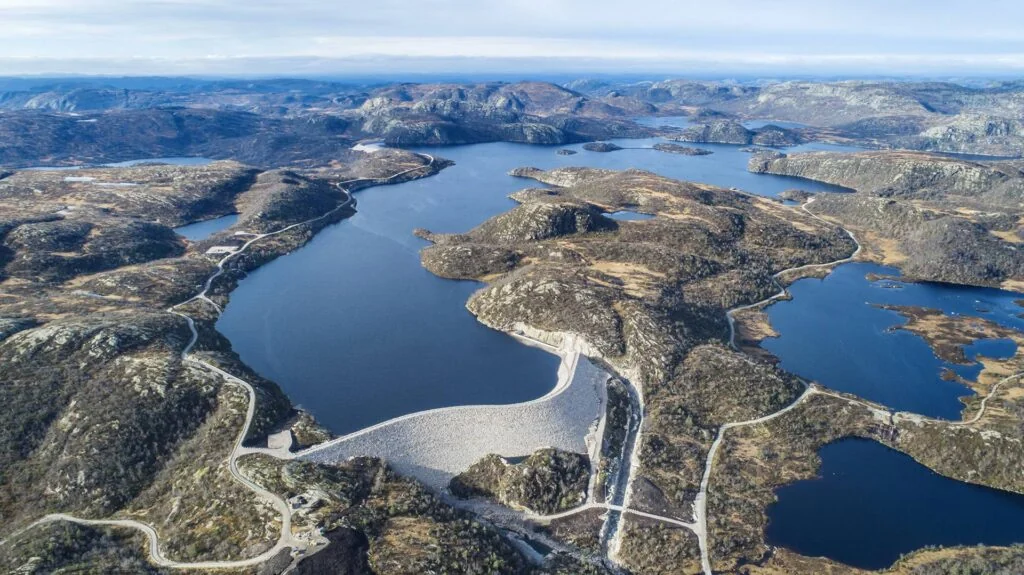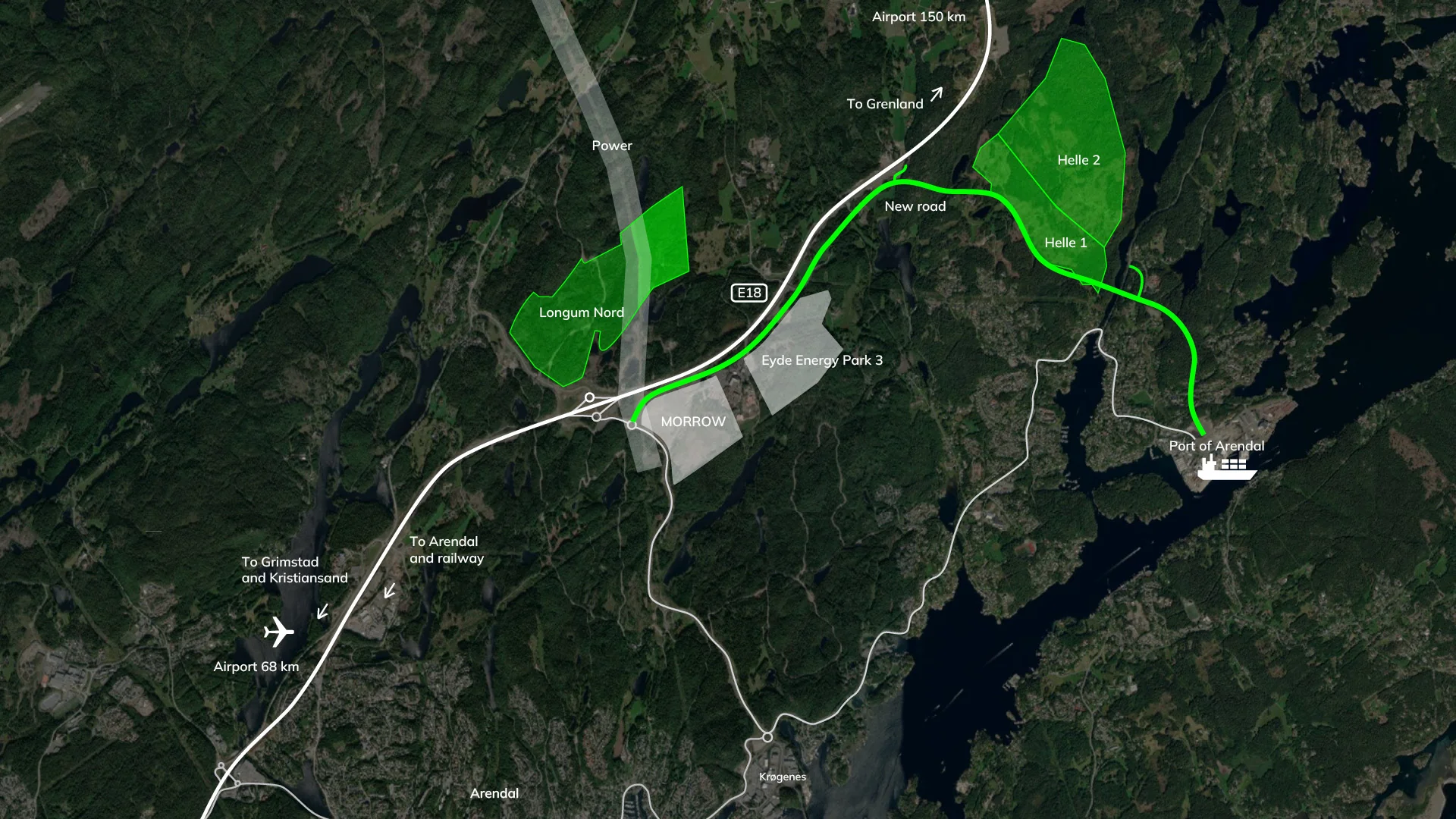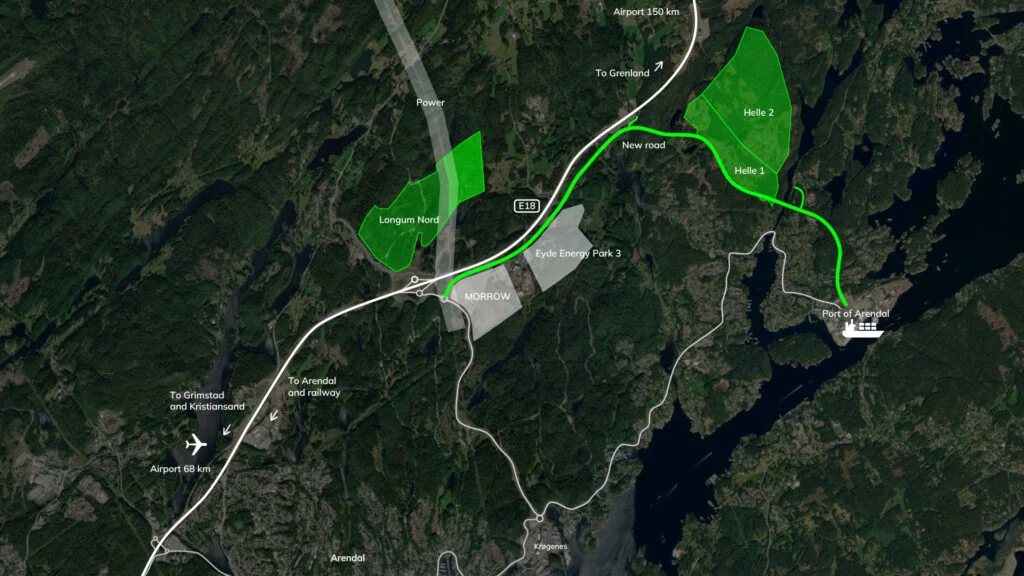The infrastructure of Eyde Material Park

The total power capacity in Eyde Material Park is 800 MW.
Power
Available redundant power for distribution in Eyde Material Park, in addition to Morrow, North Ammonia, and Port of Arendal is more than 285 MW.
The electric region powered by renewable energy
The most effective way of cutting climate emissions is by shifting to renewable sources of energy. The Agder region has an abundance of clean hydro power.
Often referred to as The Electric Region, Agder focuses on efficient ways of using energy and has many initiatives centered on the use of electricity such as electric boating, solar panels and charging facilities. The power grid in Agder also has a large capacity and offers good stability, making power outages extremely rare.
Eyde Material Park will be powered by renewable energy supplied by the nearby Bøylefoss/Monehagen hydro plant.
The Norwegian government has also opened an offshore wind park at “Sørlige Nordsjø 2”, which will most likely be connected to the grid in Agder. This will further add to Agder’s surplus of renewable energy which is currently around 15 TWH.
New road
A new road connecting the industrial area near the E18 highway and Port of Arendal is under development.
The first part of the new road from Eydehavn to Morrow is compleded. The final part of the road is currently in the planning stages (Neskilen – Morrow). The road is planned completed in 2027.
A sustainable approach is to optimize the use of the road, enabling as much transport as possible with the least traffic as possible. This demands the use of new technology, cooperation, new business models and agreements on common goals.
Other infrastructure
The municipality has the primary responsibility for providing water and sewage to the property boundaries of commercial areas when there is insufficient capacity or the infrastructure is not readily available nearby. This includes ordinary consumption, and any specific needs must be addressed separately. Developers will also be responsible for internal infrastructure on their own property.

